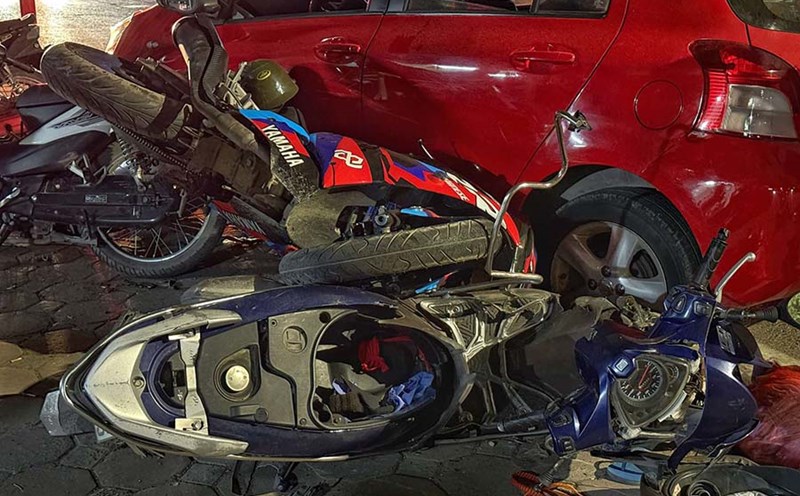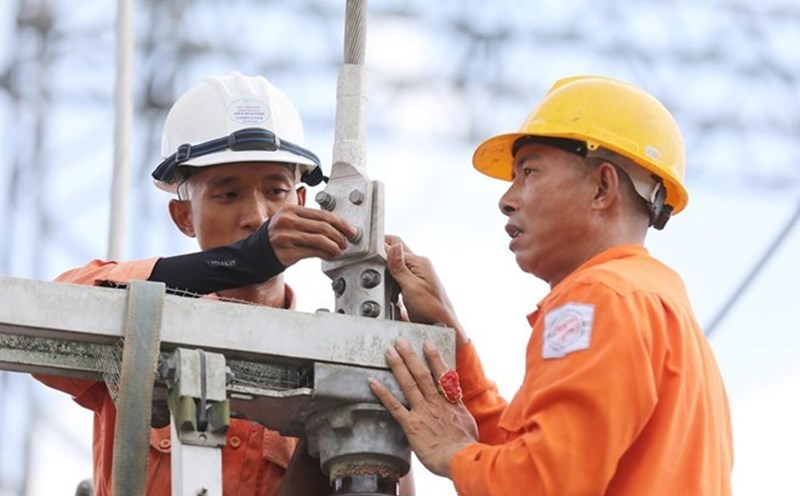Can you assess the level of green transformation of employees and the need to access green credit?
- Many Vietnamese enterprises are ready to green transformation. What they need is a more bold and flexible financial ecosystem: unified defenses, correct valuations of new assets, system risk sharing and compliance cost support. At that time, green capital will truly be "green" - flowing to the right place to create economic and environmental value.
Many employees want to borrow green credit but are not ready in terms of capacity: ESG financial records and collateral assets. The green capital market is opening, but the legal framework, guarantee products and cash flow valuation are not fast enough compared to demand. In other words, borrowers are eager, but baggage and roads are still in disarray.
Sir, what barriers are small and medium-sized enterprises currently facing when accessing capital from banks and financial institutions?
- Currently, the scale of green credit is still thin, though increasing rapidly. By the end of 2024, the country's green credit balance was about VND 680,000 billion, accounting for more than 4.3% of total outstanding loans in the whole economy. This figure shows that the "cake" is still quite small compared to the market demand. In particular, the criteria and the classification frame are not consistent. The State Bank (SBV) has just issued an action plan and is completing the list of green classification according to international standards. While waiting for detailed instructions, each bank defines green itself, leading to prolonged and costly evaluation process for both banks and businesses.
High cognitive risks, high capital costs when agricultural projects are clean, circular economy often has a long payback period, unstable seasonal cash flow, causing the internal risk coefficient of the bank to be higher than traditional loans. Enterprises lack data and capacity to prepare documents. Many employees do not have green accountants, emission reports, sustainability certificates, etc., so it is difficult to prove their environmental and social efficiency to be rated with incentives.
The depth of the green capital market is limited when green bonds, impact investment funds and blended-finance channels in Vietnam are still limited. Therefore, businesses depend mainly on bank credit. Vietnam needs to urgently issue a national green classification framework, complete environmental risk management guidelines (similar to Basel IV on climate) and encourage banks to use the "cash-flow lending" model and green credit guarantee funds to share risks.
Sir, many employees said they have difficulty accessing green credit because they do not have enough mortgaged assets. Or in some specific areas - such as agriculture and green production - mortgaged assets are not accepted by banks. In your opinion, what is the main cause of this situation and what solutions are needed to remove it?
- The root cause of this situation is due to the special problem in asset valuation. In special assets, there is agricultural land, aquaculture cages, recycling machinery... without a standard valuation framework, making it difficult for banks to accept as collateral. For example, a sea fish farming enterprise affirmed that "cages cannot be mortgaged", so it lost the opportunity to borrow to expand. The State Bank and the Ministry of Agriculture and Environment are issuing green/reversal asset valuation standards. At the same time, it is allowed to register transactions to ensure mobile assets and exploitation rights (agricultural land handbook, electricity purchase contract, carbon credits).
Second, there is a lack of guarantee funds and a risk sharing mechanism. The local State-owned Enterprise Guarantee Fund has not yet had enough capital; agricultural insurance and carbon project insurance are still in the pilot phase, and 80% of applications are rejected because of "lack of assets and no guarantees".
Third, banks are used to borrowing assets, not yet switching to borrowing cash flow. For example, the seasonal revenue of clean agriculture is considered "ational". We have piloted cash-flow lending to accept cash flow signed with guarantee contracts, rooftop solar power PPAs, carbon credit contracts; standardized with SBV guidelines (2025).
Currently, high costs for compliance and green auditing SMEs cost 2-3% of revenue/year for certificates and audits. The solution is that the State supports 50% of the initial green audit fee. Deploy a digital platform to provide free ESG reporting to employees.
Thank you!











